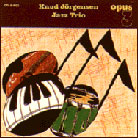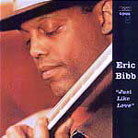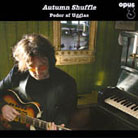![[SoundStage!]](../sslogo3.gif) The Vinyl Word The Vinyl WordBack Issue Article |
October 2006 Found on Vinyl: Three from Opus 3 Sometimes, in our eternal quest as vinyl loving audiophiles, we attempt to recapture those golden, glorious moments spinning the long-playing albums of our youth via the copious reissues released at an ever-increasing rate by an ever-increasing number of labels. In doing so, however, we tend to overlook new music on the venerable LP. One label focused on new releases is Opus 3. Yeah, I know that most have heard of Opus 3. You may have even heard some of their recordings, albeit as CDs or SACDs. But how many of you can name even one LP that you’ve heard from Opus 3? I thought so. Well, Opus 3 is alive and kicking in the analog world. They’re living up to their credo of dedication "to recording timeless acoustical music such as jazz, blues, folk and classical." And again, true to their mission, they continue to record a diverse catalog of music. I should know, as they have been kind enough to send me three of their latest LPs -- one jazz, one folk/blues, and one that for lack of a better classification I’ll dub fusion, but not in any sense you’re used to, I assure you.
The balance of the album runs in a similar vein. Sure, you may recognize the songs, but not the way they’re played. Unlike many of his European compatriots, Jörgensen is no Bud Powell wannabe. Oh, he understands his bop, but he’s into so much more. For one thing, he uses his left hand far more than most boppers do. I wouldn’t recommend trying to pin down Jörgensen's musical influences. Suffice it to say, he and his group know their jazz. Intimately. As for the recording quality, it’s punchy, dynamic and detailed but never to excess. There’s space in abundance, right along with the impression of three musicians standing in your listening room. (Or are you standing in their studio? What does it really matter?) Needless to say, the recording serves the music extremely well. One can’t ask for more than that.
Perhaps the origins of this eclecticism can be drawn from Bibb’s upbringing. His singer-father Leon was a staple of the Greenwich Village scene of the 1960s. Eric grew up hearing musical styles as different as those of Bob Dylan, Joan Baez, Pete Seeger, Odetta, and Taj Mahal. Bibb has attempted to repay those debts by displaying as many of his influences as possible on some of his later recordings. Here he simply applies what he absorbed as a young man into a musical style that is hard to pin down to one particular genre but easy to kick back and enjoy. Once again, the sonics of Just Like Love live up to the Opus 3 credo of naturalness and faithfulness to the original event. Each instrument is a three-dimensional entity, fully fleshed out, there for you to follow (or not) as you choose. Bibb’s vocals sound like the real thing. You get to hear all the inflections of his voice as he sings these songs -- inflections that can become more and more lost in the sophisticated recording processes we encounter today. Width and depth aplenty are evident, provided your system is up to reproducing them. All in all, a very satisfactory introduction to the Opus 3 folk/blues catalog.
Ugglas is the guitar player on this album -- electric, acoustic, electric slide, acoustic slide, and bowed acoustic. He also plays some tasty organ, electric piano, saw (!), acoustic piano, percussion cumbus, and bass. Whew! You might be excused for thinking that this is another Tubular Bells, with Ugglas as the lone musician overdubbing to his heart's content. However, he gets quite a bit of help from a number of his friends, though not on every track. There are nine different instrumental voices besides that of Ugglas. For the most part, this is a fairly upbeat album. Ugglas and company demonstrate that they know how to boogie right along when they need to. They also show that they understand that slowing things down doesn’t mean any lessening of sheer enjoyment. Listening to Autumn Shuffle will definitely keep you on your musical toes. Looking at this album from a purely sonic perspective, Opus 3 has once again replicated the splendor of the two previous albums I've mentioned here. This is a neat trick to accomplish with so many electric instruments to contend with. Yet, as you’re listening, pick out any instrument you want and see how far you can follow it. It’s my bet that you’ll go until the song is done. Then there is the excellent sense of fullness accorded the instruments. I was also very pleasantly surprised -- again, due to the abundance of electric instrumentation -- by the sense of recorded space. There are two things that listening to these three albums has taught me. First, globalization isn’t confined to business and communications. Music, too, has transcended borders and become a universal language. Styles and genres once thought of as the provenance of a certain country or group have now become accepted and played worldwide. Second, despite the flood of wonderful reissues being produced today, we audiophiles are doubly blessed by all the superb new music that is still being released on LPs. Labels such as Opus 3 warrant our continued attention and support. After hearing these three albums, I am no longer prepared to live without hearing new as well as old on vinyl. ...John Crossett |
|
![[SoundStage!]](../sslogo3.gif) All Contents All ContentsCopyright © 2006 SoundStage! All Rights Reserved |
 Opus 3 a
Swedish label that’s been around for quite a few years. Ah, I can see some of you
dismissing it already as just another audiophile recording label. Get over Jazz at the
Pawnshop already, will you? The Swedes make some darned fine music. I began making my
acquaintance with Opus 3 LPs via the Knud Jörgensen Jazz Trio [Opus 3 LP 8401].
This may seem, on first look, to be nothing more than a simple jazz trio -- made up of
Jörgensen on piano, Johan Dielemass on drums, and Sture Akerberg on bass -- playing jazz
standards. But if that makes you think "Oh great, another group of Swedes attempting
to play American jazz," think again. These guys rock. Right from the opening track,
the Ellington/Strayhorn original "Satin Doll," you’ll hear not just another
simple run through, but a new way of interpreting this chestnut. Jörgensen starts off
slowly, respectfully. Then he begins to veer off, asserting himself more and more. The
tempo speeds up, detours are taken, and the bass and drums do far more than simply keep
time. When it’s over, you find yourself asking if that was really "Satin
Doll" at all.
Opus 3 a
Swedish label that’s been around for quite a few years. Ah, I can see some of you
dismissing it already as just another audiophile recording label. Get over Jazz at the
Pawnshop already, will you? The Swedes make some darned fine music. I began making my
acquaintance with Opus 3 LPs via the Knud Jörgensen Jazz Trio [Opus 3 LP 8401].
This may seem, on first look, to be nothing more than a simple jazz trio -- made up of
Jörgensen on piano, Johan Dielemass on drums, and Sture Akerberg on bass -- playing jazz
standards. But if that makes you think "Oh great, another group of Swedes attempting
to play American jazz," think again. These guys rock. Right from the opening track,
the Ellington/Strayhorn original "Satin Doll," you’ll hear not just another
simple run through, but a new way of interpreting this chestnut. Jörgensen starts off
slowly, respectfully. Then he begins to veer off, asserting himself more and more. The
tempo speeds up, detours are taken, and the bass and drums do far more than simply keep
time. When it’s over, you find yourself asking if that was really "Satin
Doll" at all. My taste of
Opus 3’s ideas regarding folk/blues came by way of audiophile favorite Eric Bibb from
his Just Like Love [Opus 3 LP 20002]. All but four of the tracks on this album are
Bibb originals. Three of the others are Bibb arrangements of traditional tunes. Just
Like Love gives an excellent representation of Eric Bibb’s talent as both
songwriter and musician. Bibb’s eclecticism is represented by his use of such diverse
instrumentation as mandolin, mandola, guitars (in various guises), chord zither,
accordion, piano, kalimba, melodila, harmonica, double bass, Sousaphone, banjo, and
finally, a train whistle. Whew! That’s quite a load, yet Bibb never makes any of it
seem superfluous to the proceedings, but more a necessity.
My taste of
Opus 3’s ideas regarding folk/blues came by way of audiophile favorite Eric Bibb from
his Just Like Love [Opus 3 LP 20002]. All but four of the tracks on this album are
Bibb originals. Three of the others are Bibb arrangements of traditional tunes. Just
Like Love gives an excellent representation of Eric Bibb’s talent as both
songwriter and musician. Bibb’s eclecticism is represented by his use of such diverse
instrumentation as mandolin, mandola, guitars (in various guises), chord zither,
accordion, piano, kalimba, melodila, harmonica, double bass, Sousaphone, banjo, and
finally, a train whistle. Whew! That’s quite a load, yet Bibb never makes any of it
seem superfluous to the proceedings, but more a necessity. Finally, we get to an album that presented me with one of my
more difficult assignments -- describing the indescribable. Peder af Ugglas’s Autumn
Shuffle is about as wide a mix of musical styles as I’ve ever heard. The most
obvious are rock, blues and jazz, but they don’t begin to describe all the other
influences Ugglas has woven into this album. This is world music for those who think they
don’t care for world music. Autumn Shuffle mixes multiple styles into an album
that is, as Duke Ellington might put it, just good music.
Finally, we get to an album that presented me with one of my
more difficult assignments -- describing the indescribable. Peder af Ugglas’s Autumn
Shuffle is about as wide a mix of musical styles as I’ve ever heard. The most
obvious are rock, blues and jazz, but they don’t begin to describe all the other
influences Ugglas has woven into this album. This is world music for those who think they
don’t care for world music. Autumn Shuffle mixes multiple styles into an album
that is, as Duke Ellington might put it, just good music.